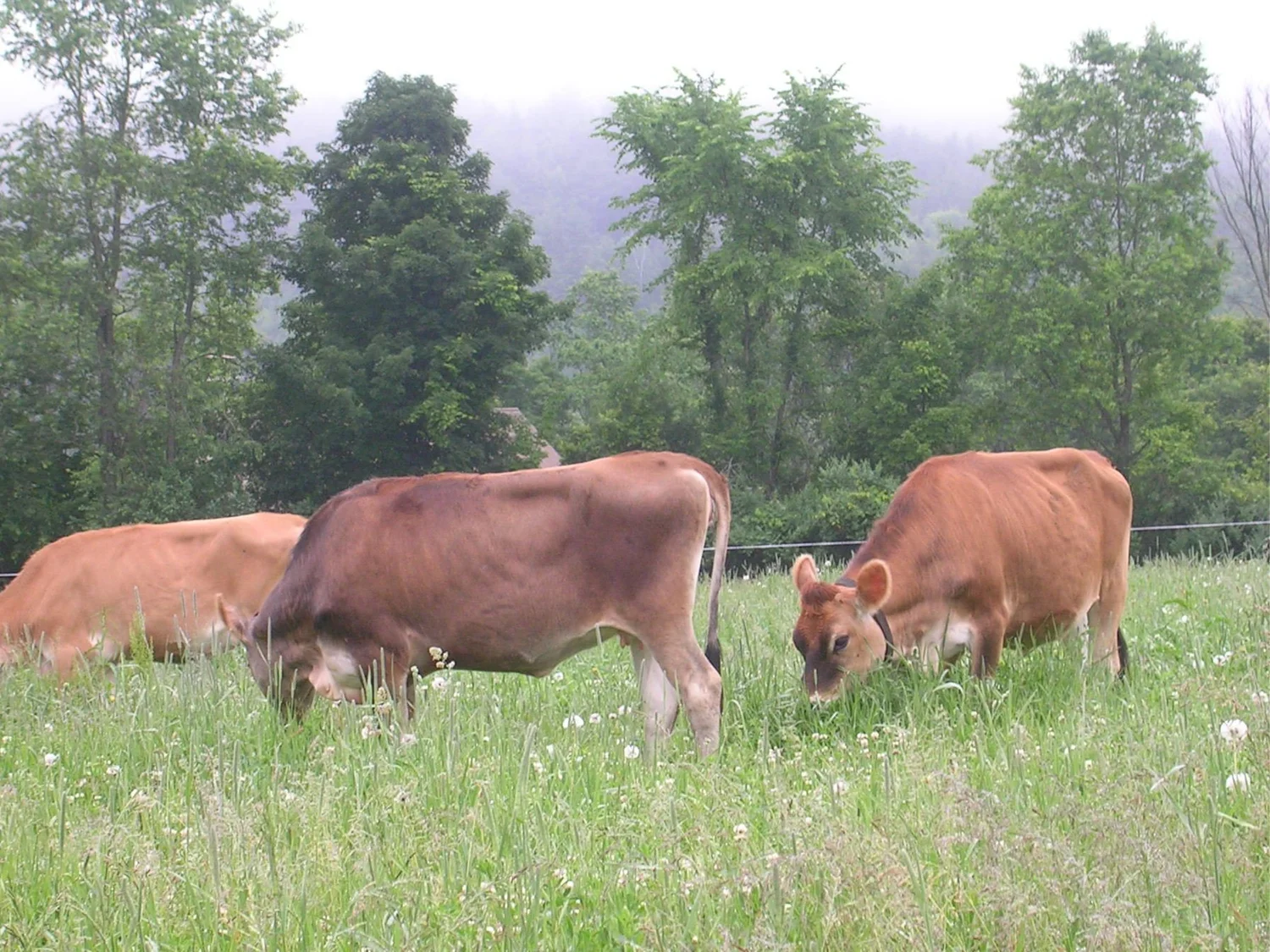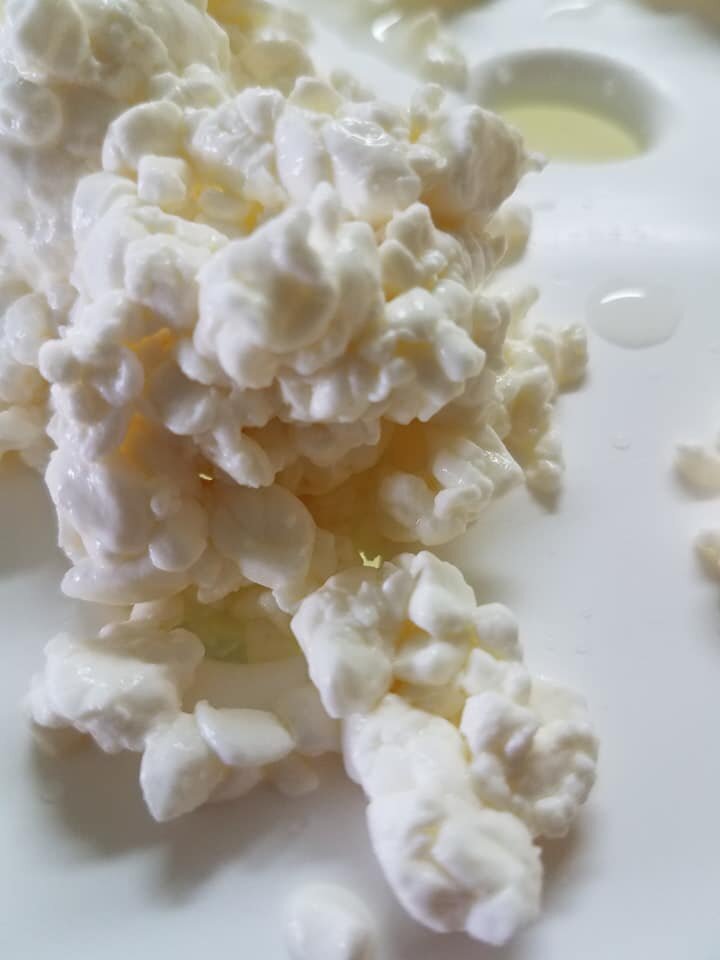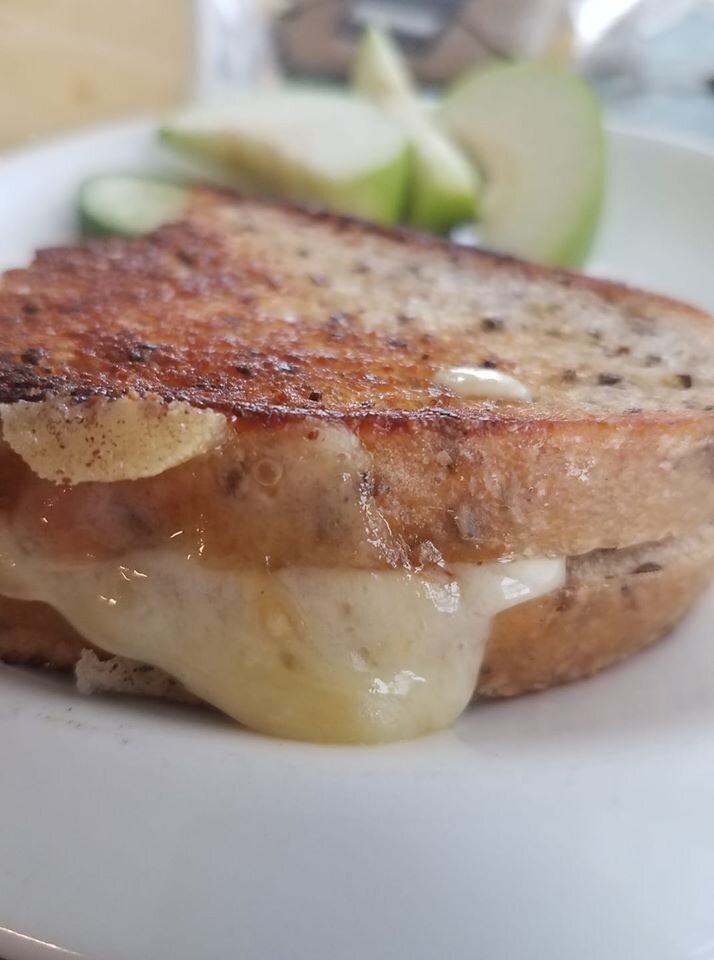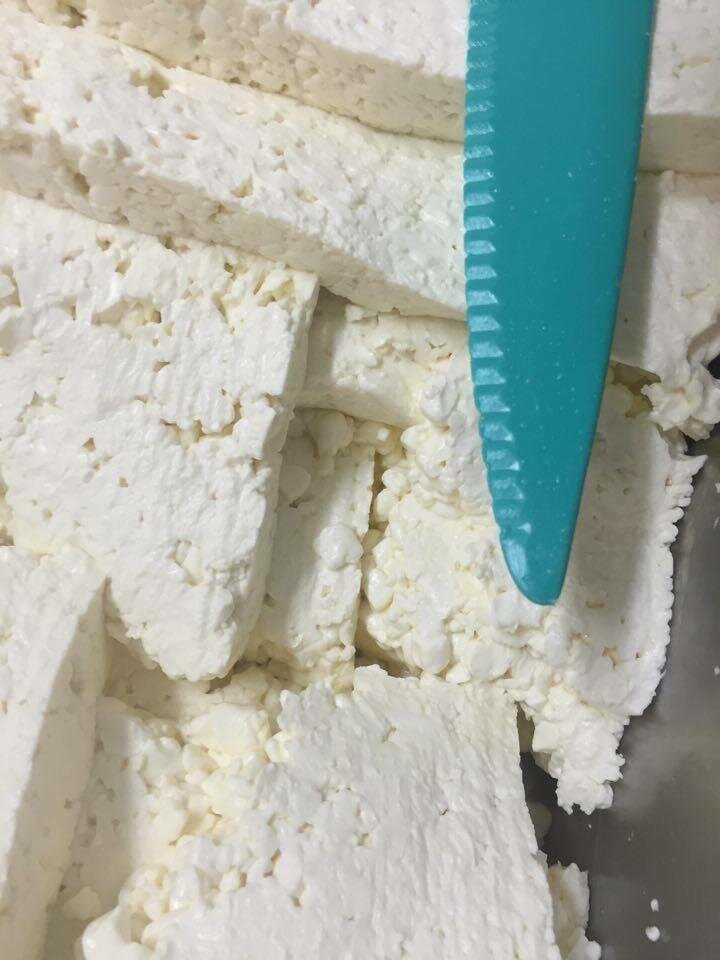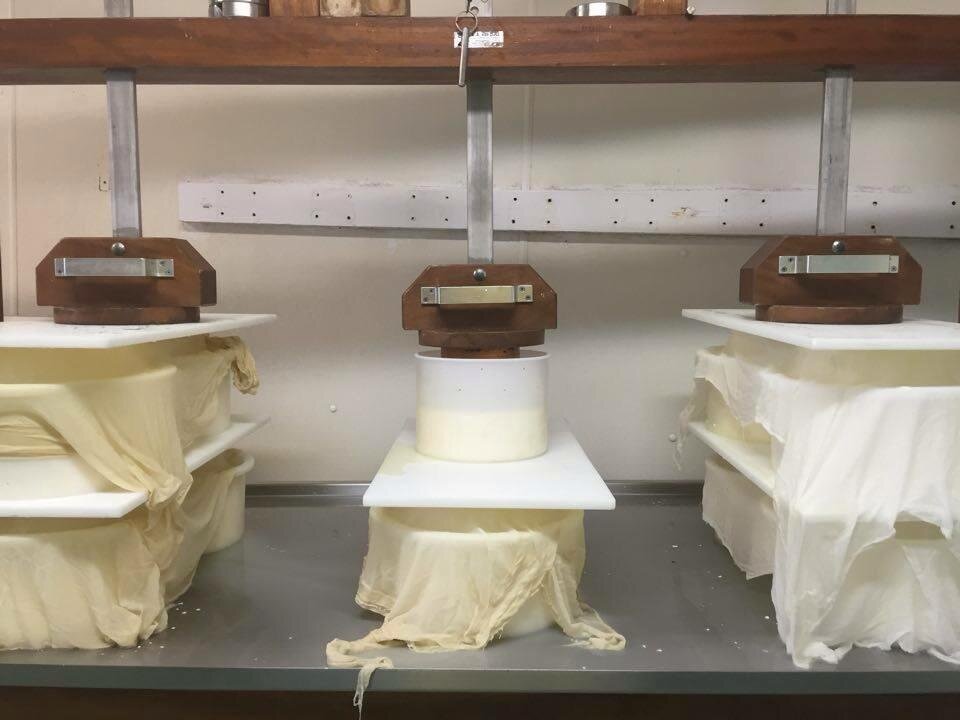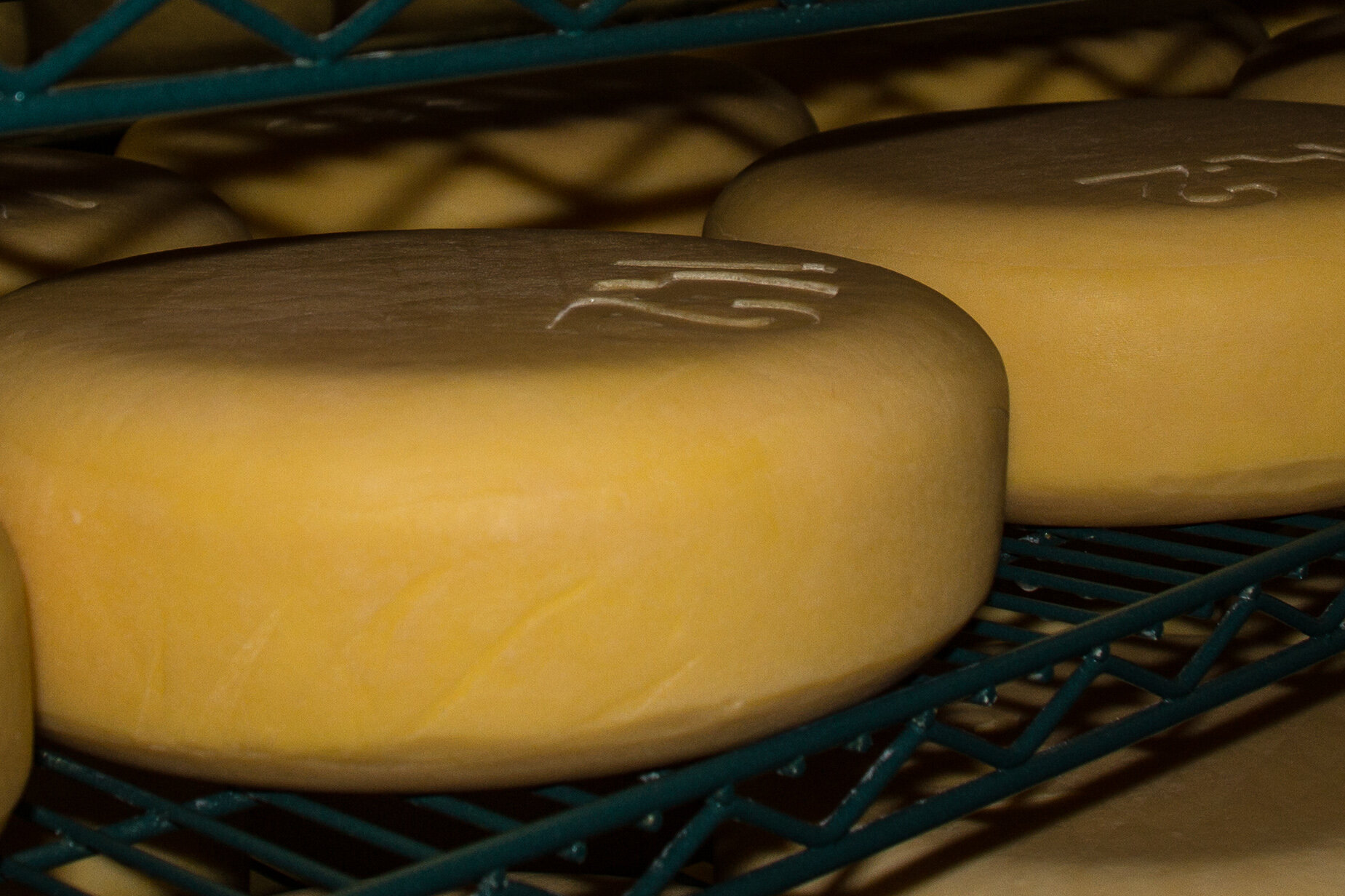Cheesemaking on the farm
The art of cheesemaking includes maintaining environments in the cheese room and aging room that encourage the growth and development of the bacteria natural to healthy milk while at the same time discouraging any unfriendly microbes. This begins with cleaning and sanitizing equipment. Once the first cleaning is done, Cobb Hill Cheese makers pump fresh raw milk from the farm's bulk tank in the milk room into the vat in the cheese room. The milk is warmed to lukewarm and the selected bacteria are added. (In days past, cheesemakers made their own starter by allowing milk to stand and attract ambient bacteria; now most cheesemakers use commercially manufactured starters.) After a while, the bacteria begin to multiply, and rennet (in our case, a vegetarian, non-genetically-modified coagulant) is added.
a full vat
When the milk has set into a solid, smooth mass of curd (feeling like silky tofu), the maker uses a tool called a harp (line strung tight on a lyre-like frame) to gently cut the curd. The sizes of the pieces vary: Ascutney Mountain is cut to rice- or pea-sized bits, while Four Corners’ curd is 1/2 – inch cubes. The temperature is increased; the curds and whey are cooked. At just the right moment, the cooking stops, the curd settles to the bottom of the vat, and the whey is removed. The whey is given to folks who like to use this rich food in their diet or to farmers to supplement the feed of their animals.
Forming And Pressing
Ascutney Mountain curd is drained and placed into cheesecloth lined hoops. Four Corners curd is removed in solid blocks that are milled – cut into cubes – and then salted and placed in hoops. The cheeses are pressed overnight. After removal from the hoops the next morning, the wheels are moved to a brine bath in the aging room.
Ripening
A day or two later, depending on their size, the cheeses move to slatted shelves in the cool, humid aging room. Every evening for several weeks an affineur or affineuse, the French name for the cheese ripening expert, wipes and turns the cheese, monitoring each one closely. Farmstead cheeses characteristically vary slightly from make to make. That is because milk from a single small herd will reflect the season, the diet, and the stage of lactation of the cows. Some connoisseurs, when tasting the cheese, can tell what the cows were grazing on many months earlier.
